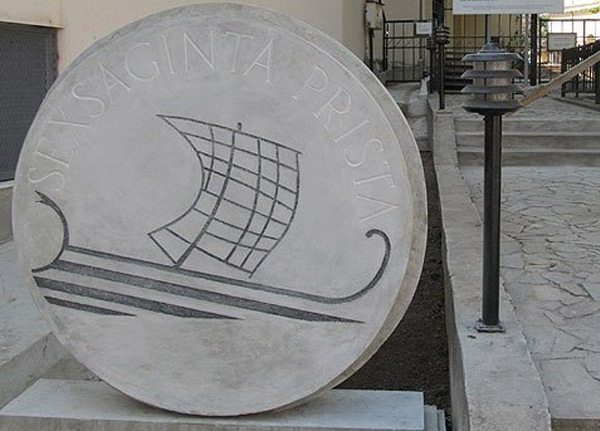Sexaginta Prista
About
The settlements around Ruse (also: Rousse) on the Bulgarian banks of the Danube date back to Neolithic times. Later, it was a Thracian settlement that was taken over by the Romans and turned into a Roman naval centre under Emperor Vespasian (70 AD). The Roman fortress, named Sexaginta Prista was only a part of a major fortification system along the river. Its name is a combination of Latin and Greek words: sexaginta, meaning 60 in Latin, and pristis, a Greek word for a special river guard ship. This “city of 60 ships” became a major river port with anchoring berths and wharfs for the famous Roman Imperial Danube Fleet, which moved over from Noviodunum ad Istrum (today: Isaccea, Romania) and controlled and guarded the entire economic and military traffic between the Black Sea, the Danube Delta and the Iron Gates of the Danube. The Danube Limes road was also of great importance, connecting Singidunum (today: Belgrade, Serbia) with the Danube Delta. It is estimated that 600 soldiers in total were stationed in this fortress. The fortress is not far from the modern-day city centre. It is a part of the Regional History Museum, which houses some of the artefacts found in this area and in the Roman castle Yatrus on the Danube. The defence walls of the fortress are still visible, and so are the tower and the barracks, while some artefacts (inscriptions, sculptures, tombstones) are kept in a German WW 2 bunker. The first discoveries on this location were made by an Austro-Hungarian, Felix Philipp Kanitz, in the 19th century. An inscription indicates that Sexaginta, destroyed most likely by the Goths in 250 AD, was rebuilt and extended under Emperor Diocletian. The port was also known as Pristis and Pristapolis. It was destroyed at the end of the 6th century AD by the Avars and/or Slavic tribes.
During Blue Week, Roman market will take place at Sexaginta Prista as a part of Blue & Wine Expo.
